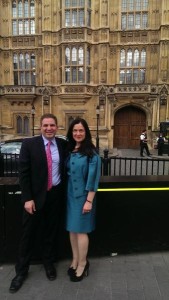Dr Andrew Dawood was invited by Knowledge Transfer Network to speak at The House of Lords on 25th June to discuss his efforts in pioneering the use of 3D printing in dental implant treatments since 1999.
Dr Andrew Dawood spoke alongside an array of professionals who provided individual insights into their specific discipline from surface engineering, advanced coatings and to new products which are looking to be launched on the market.

This opportunity stemmed from hosting the first Ceramics Workshop on March 16th at sister company Digits2Widgets, a state-of-the-art 3D printing studio in Camden.
This was the first Additive Manufacturing workshop bringing together three different industrial sectors that rely on ceramic structures (traditional tableware ceramics, dentistry and orthopaedics). It was a fantastic turnout with a good balance of academics and industrial players along the materials/ producer/ service provider supply chain.
The intention of the day was to bring together three different sectors to generate a synergy, whereby a sharing of commercial drivers and technical challenges would stimulate ideas for the future.
During 2013 the powders section of the Materials KTN created a roadmap document that outlines the challenges and opportunities for materials in the field of dentistry. As Materials KTN representatives attended seminars and discussion groups to facilitate creation of the roadmap, a concern repeatedly voiced was the potential missed opportunity for the direct manufacture of crowns etc. using Additive manufacture.
Dr Andrew Dawood accepted the invitation as a great honour to speak at The House of Lords and enjoyed having the opportunity to meet new professionals to share and discuss ideas with partner Dr Susan Tanner.
“I can not contemplate medicine and dentistry without 3D imaging. At the moment we image with X-rays, magnetic resonance, sound and superficially with light. 3D imaging using penetrating light and electrical impedance is an interesting technology, we are beginning to be able to make diagnoses from the way that light and radiation is absorbed or scattered.
“Orthopaedics is starting to benefit from 3D printing technologies, with more accurate and less invasive treatments becoming available, helping to make common surgical procedures such as joint replacement more predictable.” Dr Andrew Dawood.
“Developments in tissue scaffolds and stem cell technology will one day change everything. All this adds up to n enhanced quality of life for our patients, this is a great time to be in medicine!” Continues Dr Andrew Dawood.
